Okay, the short answer, increase your virtual memory to more than the size of your physical memory.
Long version now. Recently, I had this problem with my PC that it wouldn’t wake up from hibernation or sleep mode properly. The PC itself would be on and churning, but the screen would switch to power save mode, staying blank. The only thing to do at that point would be to restart the computer.
Like the good netizen that I am, I trawled the Internet for a solution. But didn’t find any. Some suggested upgrading the BIOS, replacing the graphics card and so on. Then I saw this mentioned in a Linux group, saying that the size of the swap file should be more than the physical memory, and decided to try it on my Windows XP machine. And it solved the problem!
So the solution to this issue of blank screen after waking up is to set the size of the virtual memory to something larger than the memory in your system. If you need more information, here is how, in step-by-step form. These instructions apply to a Windows XP machine.
- Right-click on “My Computer” and hit “Properties.”
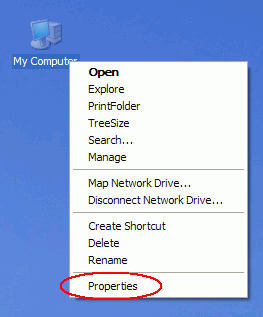
- Take a look at the RAM size, and click on the “Advanced” tab.
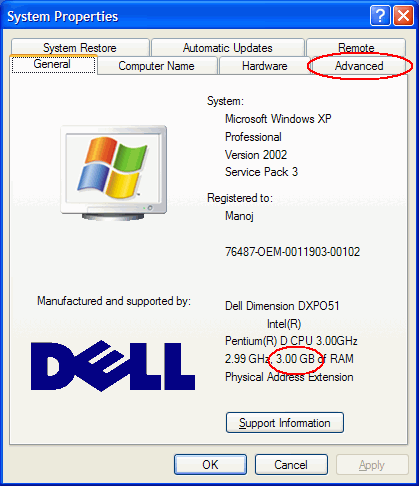
- Click on the “Setting” button under the “Performance” group box.
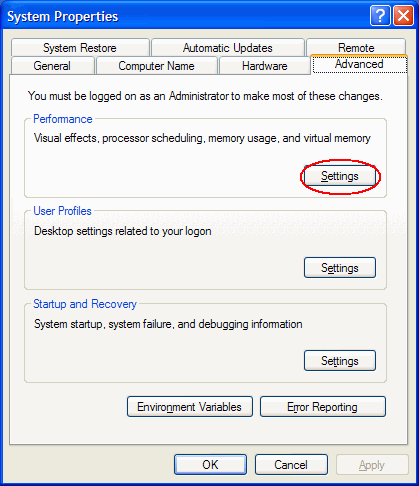
- In the “Performance Options” window that comes up, select the “Advanced” tab.
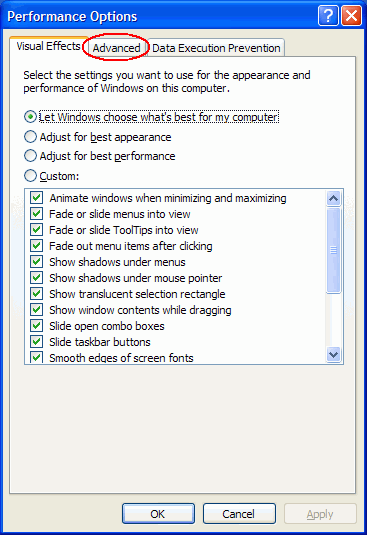
- In the “Virtual Memory” group box near the bottom, click on the “Change” button.
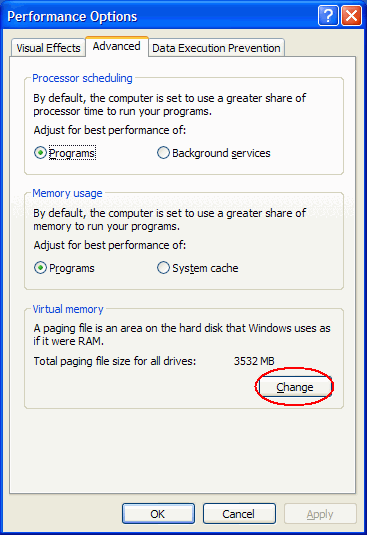
- In the “Virtual Memory” window that pops up, set the “Custom Size” to something more than your RAM size (that you saw in step 2). You can set it on any hard disk partition that you have, but if you are going through all these instructions, chances are you have only “C:”. In my case, I chose to put it on “M:”.
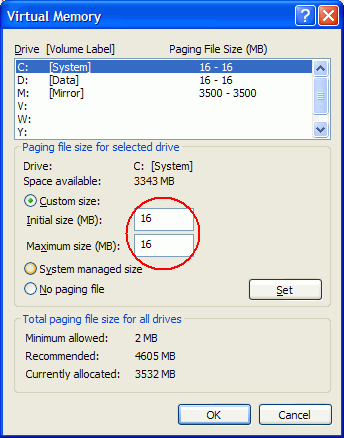


I thought I had found a solution to my blank-screen-on-wake-up problem. Turns out that it was only a temporary solution. The problem came back with a vengeance and I cannot hibernate or use sleep mode any more. I am thinking of getting a new PC now.
Hi Manoj,
I had the “Blank Screen after Hibernate/Sleep” issue also and none of the online fixes worked. I remembered it started after recent Windows security updates so I uninstalled them and now hibernate/sleep seems to be working again.
Hope this helps.
Chere
Update… sorry Manoj, thought I had it fixed but just discovered it’s still doing it. Sorry for the false hope.
If you find a fix, please pass it on.
Chere
Hi,
Thanks for your comment.
I did solve my problem, eventually. Only by buying a new PC! Can’t complain — it is Dell Precision T3400, Quad Pentium, XP64, 8GB, 1TB of HDD. 🙂
The ‘fix’ you found relating to Linux is because it uses it’s swap partition to save the contents of RAM when it hibernates. Windoz has a page file for when it’s eaten all your RAM and a hiber file for when it hibernates. It’s more than likely a bug M$ introduced.
I have had this problem for more than a year and have tried all the pèossible fixes found on the web, including microsoft patches, magic swear words and god knows what. Eventually, I stumble on the sollution by chance. This may not work all the time, but in my case (Windows XP, SP3) it did the trick:
1-right click on my computer
2-go to the hardware tab
3-click on device manager
4-Go into Universal Serial Bus Controler (by the bottom)
5-expand it into a list
this list should be littered (that was my case) with USB-something, often some left overs of badly installed USB devices.
6-remove them all, one by one, don’t worry, they will re-install automatically when the dvice is reconnected (no need for the installation CD)
Normally your computer should then resume from hibernation.
Hope this tip saves as much time as I have lost,
Cedric
I had this problem for ages on vista, but in the end I just stopped the hibernate and the problem has gone away.
To do this, go to control panel / performance and tools. On the left hand side there’s a ‘tasks’ list. Press ‘adjust power settings’ , where you will find one of ‘Balanced Power/Power saver/High performance’ selected. Which ever one you have selected, press the ‘change plan settings’ link and change the ‘put the computer to sleep’ option to never.
Job done !!!